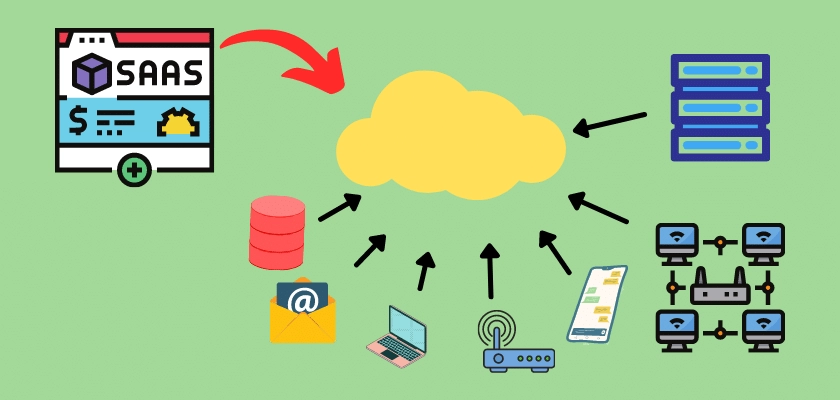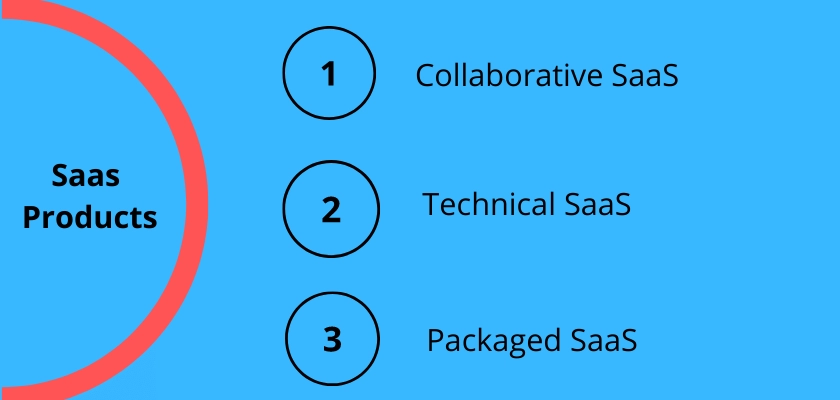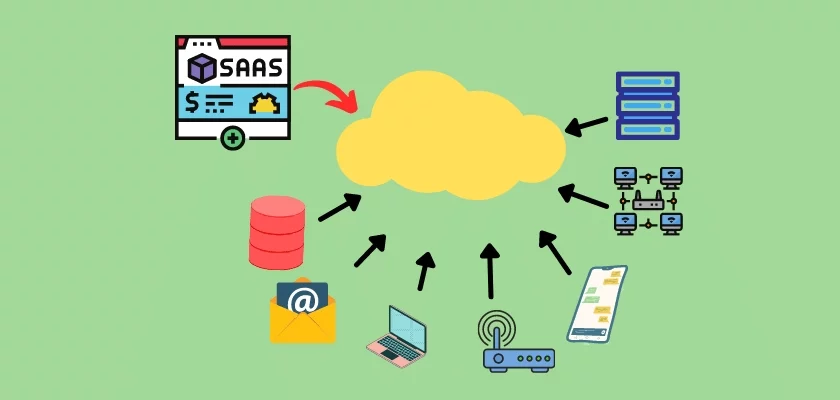
Are you thinking about using SaaS as a service solution? Then this is the right time to do it. Because of the amazing benefits of Software as a Service solution, more and more people are now adopting this model. The SaaS market is here to offer lucrative opportunities. However, to become successful with this, you have to know the basics of the Software as a Service model. This will surely help you in understanding the intricacies and dynamics of the SaaS model.
Everything you need to know about Software as a Service
This article is a complete rundown of Software as a Service along with information regarding how it can help your business in the best possible way. You may be new to the Software as a Service solution, third-party solutions or unsure if the Software as a Service solution will be the right investment for you or your company. In any case, this guide will be of help to you.
Over a few years, Software as a Service also known as SaaS has become a popular solution for so many businesses worldwide due to its effectiveness. Also, it seems like SaaS solutions aren’t going anywhere soon. According to a report by MarketsandMarkets, the cloud computing market is expected to grow up to $832.1 billion globally by 2025. To understand why the Software as a Service solution is so hyped presently, you must know everything about SaaS.
What is Software as a Service?
Software as a Service also known as SaaS is comparatively a new model for software distribution. This model gives customers access to business applications or software over the internet instead of requiring custom installation or physical media. Software as a Service product is commonly hosted by a SaaS provider centrally. The provider is also responsible for automatically maintaining and updating software products over time. At the same time, consumers can utilize these solutions through mobile or web browsers.
Software as a Service model has revolutionized the software delivery process
Arguably, Software as a Service has revolutionized the industry of software delivery tremendously. Previously, it used to be a real hassle for businesses to introduce new software or application in any organization. The process usually was a lengthy sales process, custom training, complex on-site installations, and more. Due to all these, it took longer for employees to start using the new application or software. Fortunately, the Software as a Service model has made everything more convenient and quicker.
This delivery model has become a matter of days only or even less to introduce and get started with any new application or software within an organization. It is the major reason why the Software as a Service model is becoming an increasingly popular model for delivering business software and applications. Moreover, traditional software development companies are also considering SaaS models to create new applications for quick launching.
What is a Software as a Service Company?
A Software as a Service company is a type of business organization that focuses on SaaS to design, create, manage, scale and maintain proprietary software. The biggest benefit of running a software as a service company is a quick access to a global market without any restrictions. It can also enable you scale up without even increasing the cost proportionality of the delivery of your product. Companies who are into Software as a Service aren’t the same with their products. Instead, a SaaS company creates and maintains SaaS products. A great deal of a SaaS company also revolves around marketing, sales, and customer success.
Common types of Software as a Service Products
Software as a Service products usually come in different types and sizes. They also serve different purposes as well. Due to their objectives, sizes, and types, Software as a Service products usually fall under three common categories. Let’s get to know about these three categories of SaaS products below:
So, here we go:

Collaborative Software as a Service
The main objective of collaborative Software as a service model is to enhance how teams work together and more efficiently to improve their productivity in the best possible way. Such SaaS products are commonly highly focused on seeing how different teams will connect with each other.
These SaaS products also utilize different modes of collaboration such as messaging, video conferencing, exchanging or sharing documents, and others for more effectiveness.
Technical Software as a Service
Technical Software as a Service products are the best kind among all other SaaS product types. These products are commonly meant to provide processes and tools to help in ensuring effective management of all technical processes in the best possible way.
Packaged Software as a Service
This type of Software as a Service solution is meant to aid in managing a certain process or task within an organization. Even more, packaged SaaS products also help improve the way employees engage themselves, strengthen their relationships with customers, and maintain those relationships while enhancing marketing effectiveness in the best possible way.
One of the finest examples of a packaged Software as a Service solution is HubSpot. This platform offers a wide range of tools and helps different companies use these solutions to enhance their customer relations and marketing effectiveness in a more effective way.
Why do people consider moving to the Software as a Service model?
The Software as a Service model is one of the most effective solutions for providing software applications online rather than installing them on physical devices like traditional desktop applications. However, when it comes to using Software as a Service solutions, most people don’t know how these products can benefit them effectively. Here, we have brought some of the most convincing reasons to understand why you should consider moving to a Software as a Service model.
Here we go:
Enhanced scalability
When it’s about the SaaS model, you don’t have to worry about the capacity as the usage and users of software grow. This is because moving to a Software as a Service model means that you can add more users whenever needed without managing new hardware and any other infrastructure components.
Instead, you can receive additional bandwidth and storage space with only a push of a button. Even more, if you need additional user licenses, you can easily obtain them by creating a new user ID.
Cost-effectiveness
Most importantly, a Software as a Service model costs much lower than traditional software deployment costs. Even though clients are often just highly focused on the ongoing software prices, the overall ownership costs with the Software as a Service model is lower comparatively.
Along with that, this model is also a cost-effective solution considering initial setup costs. Total upfront costs are way lower as well as you don’t have to buy and manage any hardware or infrastructure components with SaaS products.
Additionally, eliminating the hassle of managing client-side hardware can dramatically reduce your software deployment costs. You don’t even need to shut down your system for any hardware repairs and upgrades.
So, overall, the Software as a Service model is a highly cost-effective solution in deploying and launching your applications and software quickly.
Time to launch
All Software as a Service applications are commonly pre-installed and integrated into a cloud platform. This helps reduce common delays in the best possible way which usually results in lengthy software deployment processes.
However, with the SaaS model, once an application or software development process is completed, you will be all set to start utilizing it quickly.
Increased customer loyalty
Cross-selling and upselling are also commonly built with a Software as a Service model. Instead of missing a chance to pitch your customer on the number of features they need to take on, You can give them complete options in the menu. Due to which customers can easily change or add a feature whenever they need it. This approach in the Software as a Service model will enable you make additional revenue and help you boost your customers loyalty to your organization in the best possible way.
Automatic updates
Instead of buying entirely new software, customers usually rely on their SaaS providers to automatically perform updates and patch management. This helps them keep their software highly efficient, updated, and lets them reduce the burden on their in-house IT staff.
Persistence and accessibility
Commonly, Software as a Service vendors utilize the internet and cloud to deliver applications. As a result, it becomes easier and more convenient for users to access these applications from any device and location without any hassle. Ultimately, a boost to the accessibility and persistence of applications and software in the best possible way.
Flexible payment options
You don’t have to purchase software to install or buy additional hardware and infrastructure components to support your application with the Software as a Service model. Instead, you subscribe to the offerings of a SaaS product as per your needs. This helps customers transition costs to a recurring operating expense. It also allows businesses perform better with more predictable budgeting.
Most importantly, customers can even terminate their Software as a Service offerings whenever they want to avoid recurring costs.
Increased valuation
Commonly, the valuation of a company relies on cash flows, profits, or revenues. It will even include both future projections and current numbers as well. However, in traditional on-premises software deployment, software providers commonly face a plateau because previous buyers usually prefer to stay with their original software products. Due to this, they do not make any new purchases.
However, on the other hand, SaaS companies usually experience lucrative growth in their revenues. This is because they control the customer churn themselves. Additionally, the growth projection can help them experience increased valuation with ease.
Key features of the Software as a Service model
Below are key features of the Software as a Service model:
(1) Software as a Service ensures easier customization and lets customers configure software applications exactly as they want.
(2) You can ensure enhanced data security by using different security tactics with Software as a Service. These tactics include data encryption, user permission, multi-factor user authentication, etc.
(3) Software as a Service solutions are commonly based on a multi-tenancy model. It means the same codebase will be shared among users when they log into any cloud program. Maintaining and updating the software solution is also the vendor’s responsibility. So, you can enjoy a stress-free experience with ease.
Rather than dealing with any licensing fee structure, SaaS solutions can enable you get your required services with subscription-based billing. This will ultimately add more flexibility to the overall pricing as well.
Common challenges or restrictions of Software as a Service
Even though the SaaS model is here to offer enhanced convenience and ease to both software product providers and customers. However, at the same time, this model has some challenges and restrictions as well.
No versioning controls
By using the SaaS model, customers usually lose their control over versioning. It means if the SaaS provider is going to adopt a new application version, the update will roll out to overall customers of that service provider, regardless of whether the customer wants to update to the new version or not.
It can ultimately lead an organization to spend more time and money in training employees for an updated version to keep using the Software and application properly.
Lack of control over your Software or application
Commonly, in the SaaS model, the third-party provider controls the application and its updates entirely. Due to which sometimes customers even have to accept unwanted changes as well. However, to overcome this problem, you must keep an eye on the service level agreement of the SaaS provider to understand things better.
Its not easy to switch SaaS vendors
It is one of the most important yet complicated challenges of a SaaS model. Customers usually find it difficult to switch to another SaaS vendor from their current vendor. This is because switching requires migrating large amounts of data from one platform to the other.
Along with that, some of the SaaS vendors also use proprietary data types and technologies. This can complicate the process of transferring data further between vendors.
Issues out of customer control
In some cases, issues in the provider’s systems can lead to service disruption. It can also impose unrequired or unwanted changes to the experience and offerings of a SaaS-based service. All of these will definitely impact on the ability of customers to use SaaS services.
However, to mitigate such issues proactively, customers need to understand the SLA of SaaS providers. Also, ensure that these SLAs are enforced.
Security concerns
Data is commonly handed by a third-party vendor in a SaaS model. This fact makes some users uneasy and more concerned about their security. Arguably, this is a reasonable concern with a SaaS model.
However, the best way to deal with this problem is to store your sensitive information in more than one location. This way, it will not only become easier to reduce your data security concerns. But also, you can ensure the accessibility and availability of your data if a vendor is experiencing any issue or has gone down for any reason.
For whom SaaS model is the right choice?
Fortunately, the SaaS model is the right choice for almost everyone. Still, if you are the one who wants to:
- Lower your software costs
- Reduce time to benefit
- Make a software application easier to use
- Expand your services to new markets
- Have a more predictable business model
- Experience enhanced stability
- Enjoy stress-free scalability or anything else like that.
Then it would help if you prefer using the SaaS model for your business. A SaaS model can benefit you in all these ways without any limitations.
Final Thoughts
Overall, Software as a Service solutions aren’t becoming increasingly popular due to their outreach. Instead, SaaS products are popular and preferable because of the lucrative benefits. It is why most of the market shares are falling into their buckets.
So, if you want to step into the Software as a Service industry, this is the right time to because in the coming years, the competition will become higher as more and more businesses domicile in the SaaS model entirely.
